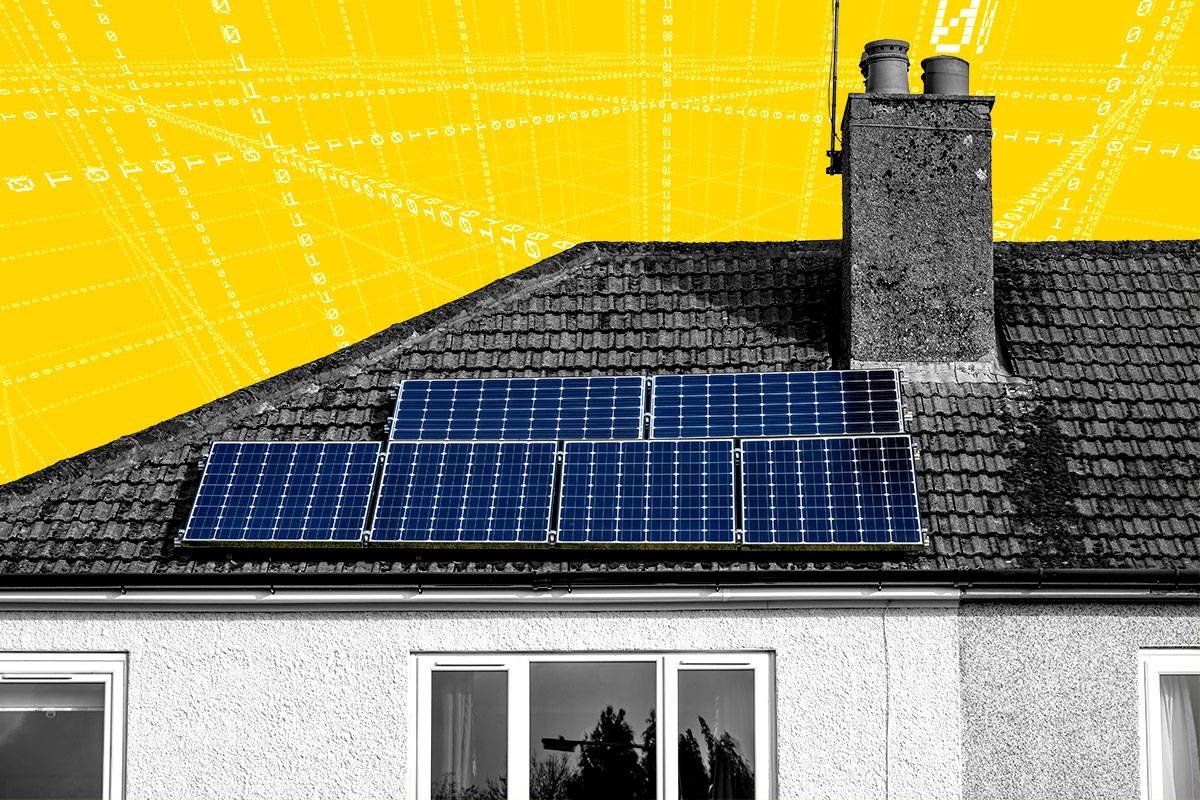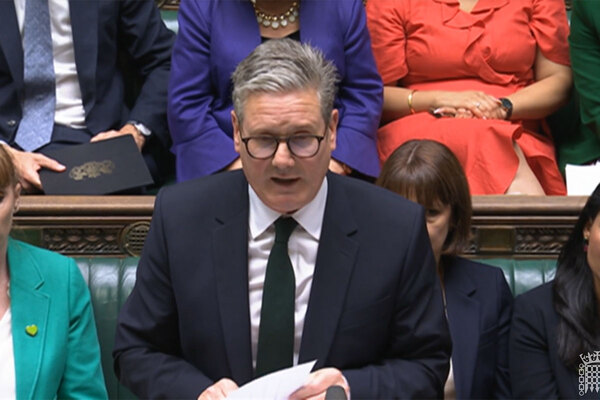The gold rush
A scheme which pays households for generating their own power means landlords are sitting on a potential gold mine. But to reap the rewards they must install costly solar panels. Nick Duxbury reports.
Confusion is etched on Jim McMillan’s face. This can happen when you look at the sun for too long. The assistant director of development at 15,000-home housing association Great Places has just stepped out of a managerial meeting about solar panels at which the burning question is, ‘is there such a thing as a free lunch - and if so should we dine?’
The potential ‘free’ meal in question is gratis electricity for tenants, generated by photovoltaic panels installed on every one of the associations’ south facing roofs. The reason someone else is offering to pick up the tab is the feed-in tariff - a secure 25-year income stream created by selling the electricity tenants don’t use back to the national grid.
The previous government introduced the FITs scheme in April, paying a set rate of 41.3p for every kilowatt per hour generated, plus 5p per kilowatt per hour for each unit sold back to the grid. It is designed to incentivise households and landlords to install photovoltaics (otherwise known as solar panels) on their roofs. But there’s a rub: this introductory rate will reduce after 31 March 2012, and there are growing concerns that next month’s comprehensive spending review will see it fall even further than expected.
Cash guarantee
With such a limited window to cash in on the promise of secure 25-year returns, a frenzied gold rush has begun. Companies - some household names, others start-ups - are clamouring to raise the capital to install as much PV as they can as quickly as possible.
Social landlords, with their thousands of centrally managed south facing roofs, are being eyed up as a lucrative income source. Firms know that housing providers must install PV to help reduce tenants’ bills and to cut their carbon emissions to meet government targets. Local authorities and social landlords are reporting a slew of approaches from companies offering various deals promising ‘free’ PV installation and cheap electricity.
Some of these ‘something for nothing’ deals offer clear and immediate benefits for social tenants. But in return, they also require landlords to sign away the resulting FIT revenues.
Great Places, like hundreds of other associations across the UK, therefore faces a dilemma: what is the best long-term route to installing photovoltaics? Sign up to one of the touted roof rental schemes; join the gold rush and do it themselves; try to join a consortium of other associations - or try something else entirely?
There is no clear answer - especially given landlords’ ranging sizes and resources and the number of options on offer. A rash of companies have appeared targeting residential and commercial properties. Big energy players are competing alongside boutique start-ups. Three weeks ago British Gas launched a ‘rent-a-roof’ scheme in which it will install PV panels for free. Customers will benefit from the electricity generated on their roofs, but will forfeit the feed-in tariff cash in return.
A host of other companies are offering variations of this model, and as the market becomes increasingly busy, some are seeking more imaginative access to roof space. For instance, Our Generation, the sister company of renewables installer the Mark Group, has just launched a £50 million scheme to install PV on schools and is thought to be looking at rolling out similar programmes to other public sector properties. Even car parks and fields are being targeted.
London-listed Eaga was the first to offer free PV to social landlords. The green services company set up its clean energy programme in February ahead of the FIT launch. It has since signed up 800 roofs - all funded by its own balance sheet. ‘This should be so easy to sell,’ says John Swinney, group strategy director at Eaga. ‘But it is actually quite hard because the sceptics don’t believe there is anything that you can get for free.’
Eaga seems to be convincing the sceptics pretty well so far; the company has heads of terms agreed for pilots with 14 social landlords. The smallest covers 16 homes, the largest 600. Places for People is one of the larger associations that favours the Eaga model and is undertaking a 250-home pilot.
‘We are dipping a large toe into the water,’ explains Nicholas Doyle, head of sustainability at Places for People. ‘We have no problems with the fundamentals of what Eaga is offering. It looks like a great idea. However, we need to test the practicalities - the fundamental problems that could come as a result of “nailing stuff to buildings”. We have done six homes so that tenants can see what we want to do and so that Eaga can get a feel of what we are like to work with. Our ambition would be to retrofit several thousand homes by 2011.’
Now Eaga hopes to convert other social landlords to a similar way of thinking. The company, which recently announced a 10 per cent increase in pre-tax profit, told its shareholders that it would gain access to 16,000 social rooftops. To do this, it is thought to have agreed a deal with private and institutional investors and Royal Bank of Scotland to set up a £350 million fund to invest in installing PV on social housing roofs (Inside Housing, 17 September). The fund would aim to generate returns of around 9 per cent, while Eaga would earn installation and asset management fees.
On a smaller scale, sustainability consultancy Clean Renewable Energy Group has just launched a £50 million fund, targeting institutional and private cash to bankroll PV on the roofs of social housing and public sector property. Investors must wait 10 years to cash in on their investment, after which CREG reckons on returns of between 7 to 8 per cent. ‘This is not hedge fund territory,’ assures David Collett, chief executive of CREG. ‘We have attracted mostly UK funds, but are seeing increasingly more European and sovereign wealth interest - all of which are willing to take a long-term view and want a social benefit. What we offer providers is a de-risking of the process and the minimum electricity costs we can get after we have got our return for our investors.’
Unsurprisingly Mr Swinney argues that offering their roofs up to such schemes is landlords’ best option and that they face a tough ride if they try to go it alone. ‘If an association tries to do this, then there are huge administration and recruitment costs as well as the costs of setting up an installation team and a supply chain. A number of associations have said they want to try to do it themselves, but they haven’t got anywhere at scale. Raising funds for this is still very hard; we are well-established, but it has still taken a year for the banks to get their head round this - so we had to do all our work to date off our own balance sheet.’
Going solo
Despite these hurdles, many landlords are not prepared to sacrifice their feed-in tariff rights. This group sees the FIT as a valuable source of long-term income during tough economic times - and one which could be reinvested into their stock. South Yorkshire Housing Association is one of the landlords looking to go it alone. Last month it agreed that Solarcentury, the UK’s largest independent solar energy company, would install PV on 400 of its roofs.
For many landlords eyeing this route, paying upfront installation costs to companies like Solarcentury is the main barrier to going it alone - so some are considering joining a consortium. As reported by Inside Housing (27 August 2010) the National Housing Federation is working with the Energy Efficiency Partnership for Existing Homes and the Housing Finance Corporation to set up a multi-million pound renewable energy loans fund using at least £74 million of low-cost debt from the European Investment Bank. By working with the not-for-profit HFC, the cost of capital can be lowered further, allowing associations to install PV and retain some of the FIT to pay for further retrofit work. To make it work they need around 25 housing associations to sign up.
Similarly, Manchester Council is working with around 25 social landlords and the Association of Greater Manchester Authorities to form a consortium that could draw institutional investment.
‘We have a clear agreement that we are not interested in partaking in a free PV scheme,’ says Michael O’Doherty, Manchester’s assistant director of housing. ‘We are looking at setting up a special purpose vehicle and seeing how we could draw in institutional investment. For us this is about meeting the much wider retrofit challenge than just PV, but we are looking at how we can use the FIT with a pay-as-you-save scheme.’
However, as one housing sustainability boss says ‘this is a great idea in principle - but getting it done will be a bit like herding cats’.
Hence some associations, like Great Places, are trying to find a fourth way. ‘Initially we were really interested in some of the offers we received,’ says Mr McMillan. ‘But then we thought: if these companies can raise the money then why shouldn’t we? So, we thought let’s put the money up instead of their investors. The financial model is fine, but there are so many practical ifs and buts that we decided to do a 100-home pilot first.’
This pilot will cost £1 million, paid for from cash previously earmarked for development which failed to attract Homes and Communities Agency grant funding. For most associations this won’t be an option.
One company already offering a cost-effective variation to this route is The Omni Group. It plans to launch its empower community fund, initially investing up to £100 million into installing PV on social housing.
What makes this approach different is that the ECF is more of a funding mechanism than a fund, channelling institutional cash into special purpose vehicles in which landlords will own a 25-year stake - but only as and when they are ‘project ready’. According to Robert Knowles, director at Omni Group, this way social landlords will retain between 15 per cent and 20 per cent of the long-term revenue stream.
The need to offer landlords a slice of the tariff is starting to register. For associations such as Peabody, which is still examining its choices, this is a welcome development.
‘We are running the numbers at the moment to work out what we should do,’ says head of sustainability Nic Wedlake. ‘It’s almost like a weekly inundation of companies making offers at the moment - but we are seeing organisations becoming much more flexible than they were, asking us how we could make it work.’
Lassoo tactics
Amid the clamour for FITs, finding a balance between risk and reward is difficult (see box below, FITfalls) - and in an increasingly crowded market there are problems. Mr Knowles warns that for smaller associations seeking to participate in roof rental schemes, not all the new entrants to the market are trustworthy. ‘There is an increasing number of cowboys walking into this market. Local authorities are telling us they are seeing some ludicrous claims being made by City wide-boys.’
Mr McMillan concurs: ‘Some of the companies approaching us are clearly throwing themselves together - the ink is still wet on their business cards.’
And there are other concerns about the PV gold rush. Andrew Percival, consultant at contractor Kinetics Group, argues that providing ‘free electricity’ could cause tenants to start using more of it - hardly sustainable stuff.
He adds that the government’s renewable heat incentive is coming ‘in one shape or form’ next April and will bring with it opportunities to use roof space for solar thermal panels.
‘While everyone is going mad for PV, the other renewable options have almost been stifled,’ he says. ‘You have to consider south facing roofs a valuable asset - and technology is moving so fast that you have to carefully think through everything in the context of your wider asset management before signing away your roof for 25 years.’
However the fate of RHI is far from clear. There is sector-wide concern that the chancellor will use his comprehensive spending review to reduce or even scrap it altogether. Inside Housing understands that the scheme will survive October’s CSR, but will emerge as a community-based incentive rather than one for individual homes.
Either way, Eaga is already planning a free installation scheme to take advantage of RHI - and you can bet countless other companies that have already missed the FITs gravy train will be doing the same.
Like the original gold rush, this one will have its winners and its losers. The trick will be making sure social landlords check their greed and think twice before tucking into a free lunch.
FITfalls: a legal guide to installing photovoltaics
Before deciding to install PVs, social landlords should do their homework, says Andy Barnard
- Check the smallprint - FIT rules are unclear in some key areas. For example, their definition of ownership means landlords using certain models may be surprised who is entitled to tariff payments.
- Don’t assume you will receive the top, 41.3p tariff rate - energy regulator Ofgem has discretionary powers to decide whether or not organisations with PVs on multiple roofs should receive the top rate per property, or a reduced ‘bulk’ tariff.
- Check your tenancies and leases - if a roof is not excluded from the rest of the property you may need tenant consent to install PV panels. In certain areas planning permission may also be required.
- Bear in mind your regulatory requirements - some models require a roof space lease to be granted to a special purpose vehicle, which may require Tenant Services Authority or Communities and Local Government department consent.
- Don’t forget European procurement rules - apply them to your chosen model. If your organisation intends to fit panels itself it is hard to see how you can avoid an EU process.
- Remember to allow for panel maintenance bills during the FIT period as well as removal and disposal costs if the panels are to be obsolete in 25 years’ time.
- Ignore the taxman at your peril - the tax situation for FIT payments is very unclear. Landlords may be regarded as supplying electricity to the grid and therefore subject to VAT. In some cases, they will have to pay corporation tax, and certain models involving leases could attract stamp duty land tax.
Andy Barnard is a partner at law firm Trowers and Hamlins











